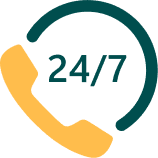The healthcare industry is witnessing a significant transformation, with revenue cycle management (RCM) systems leading the charge. Traditionally, manual RCM systems have been the norm, involving tedious paperwork, time-consuming data entry, and a high risk of human error. However, as technology continues to advance, more healthcare providers are making the shift to automated RCM systems. This transition is not just a trend but a critical move to enhance efficiency, reduce errors, and streamline billing processes.
Key Takeaways:
-
Moving from manual to automated RCM systems improves efficiency, accuracy, and reduces costs.
-
Automation eliminates repetitive tasks, allowing staff to focus on higher-value activities.
-
Real-time data access and error detection are significant benefits of automated systems.
-
Healthcare organizations can improve cash flow, reduce claim denials, and achieve faster reimbursements.
Real-Life Example:
Take the example of a mid-sized healthcare clinic that relied on manual processes to manage their revenue cycle. Each day, the front office staff had to manually enter patient data, check insurance eligibility, and file claims. This led to frequent errors, delayed reimbursements, and increased administrative costs.
Once the clinic decided to implement an automated RCM system, everything changed. The system automatically verified patient eligibility, generated accurate billing codes, and submitted claims in real time. Staff could now access updated financial reports instantly and address issues as they arose. As a result, the clinic saw a 30% reduction in claim denials, a 40% decrease in administrative workload, and a significant improvement in cash flow.
The Problem:
Manual RCM systems are often slow, error-prone, and inefficient. The reliance on paper-based forms and human intervention creates bottlenecks, delays in claim processing, and difficulties in tracking claims status. Staff spends a significant amount of time on administrative tasks, leaving little room to focus on patient care or other high-priority duties. The outcome is a slower reimbursement cycle, increased claim denials, and a general strain on resources.
The Solution:
Automating the RCM system addresses these issues by reducing manual input and providing real-time data processing. With features like automated claim submissions, instant eligibility verification, and real-time billing, automated systems streamline the entire revenue cycle. These systems integrate seamlessly with Electronic Health Record (EHR) systems, making patient data accessible at the touch of a button and enhancing the accuracy of claims submitted to insurance companies.
Additionally, automated systems use artificial intelligence (AI) and machine learning to detect errors and predict potential issues before they become problems. This proactive approach helps identify and address issues early, reducing claim denials and improving the overall efficiency of the billing process.
Results:
By adopting an automated RCM system, healthcare organizations can experience the following results:
-
Reduced Claim Denials: Automation ensures that claims are submitted with the correct codes and patient information, leading to fewer denials.
-
Improved Cash Flow: Faster claim submissions and more accurate billing result in quicker reimbursements.
-
Cost Savings: By reducing the need for manual labor and minimizing errors, healthcare providers can cut operational costs.
-
Better Compliance: Automated systems ensure that the organization stays compliant with changing regulations and payer requirements, avoiding costly penalties.
-
Enhanced Reporting: Real-time data allows for better decision-making and more accurate financial forecasts.
What Did We Learn?
The transition from manual to automated RCM systems is a crucial step for healthcare organizations aiming to improve efficiency and reduce administrative burdens. Automation not only saves time but also minimizes errors and enhances financial performance. With quicker reimbursements and fewer claim denials, organizations can focus more on patient care and less on paperwork.
What people are asking?
What are the main benefits of switching to an automated RCM system?
Benefits include reduced claim denials, faster reimbursements, improved cash flow, and significant cost savings.
Is automation in RCM suitable for all healthcare organizations?
Yes, automation can benefit healthcare providers of all sizes, from small clinics to large hospitals.
What challenges might healthcare organizations face when transitioning to an automated RCM system?
Challenges include initial implementation costs, training staff, and integrating the new system with existing software.
How quickly can healthcare providers expect to see results after implementing an automated RCM system?
Results can be seen within a few months, with noticeable improvements in claims processing and cash flow.
Is automated RCM fully reliable?
While automated systems significantly reduce errors, periodic oversight and monitoring are still required to ensure accuracy and compliance.
Disclaimer
For informational purposes only; not applicable to specific situations.
For tailored support and professional services,
Please contact Staffingly, Inc. at (800) 489-5877
Email : support@staffingly.com.
About This Blog : This Blog is brought to you by Staffingly, Inc., a trusted name in healthcare outsourcing. The team of skilled healthcare specialists and content creators is dedicated to improving the quality and efficiency of healthcare services. The team passionate about sharing knowledge through insightful articles, blogs, and other educational resources.
 Book a Demo to Build Your Team Today!
Book a Demo to Build Your Team Today!


 Read Case Studies
Read Case Studies 



 Virtual Medical Assistants
Virtual Medical Assistants



